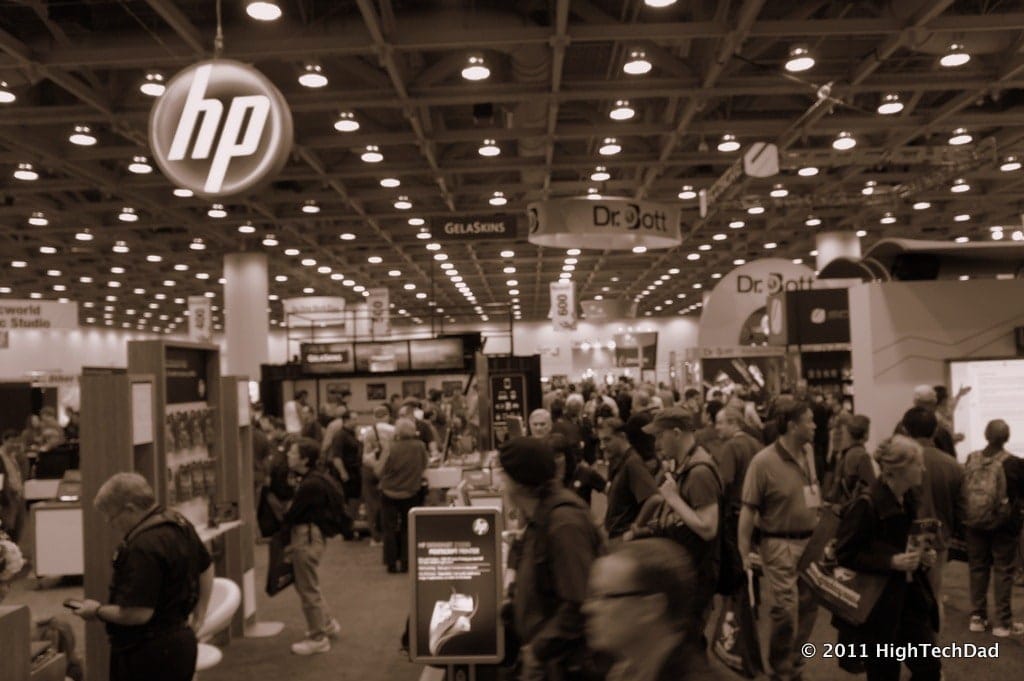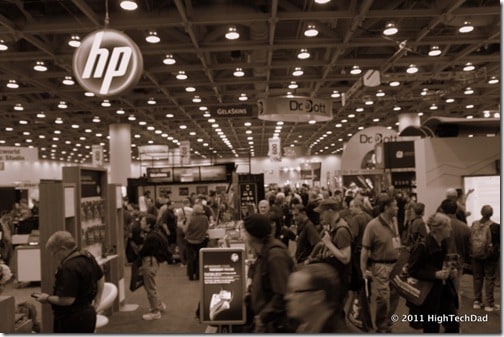This is the Second Part of a Two Part series that hopefully will help you plan out and strategize your next trip to a trade show. In the previous post, I discussed the Pre-Show Planning. It’s important to think about the show well before you get there. If you haven’t read Part One of this post, be sure to take a look at it.
This portion of the article is mainly about what to do AT and AFTER attending a trade show. This part becomes increasingly more subjective as people have different expectations of a show as well as objectives and directives after the show concludes. What I offer below are some ideas to help guide you. I do hope that people will add their own ideas to this post in the comments section.
At the Show Activities
So you made it to your hotel, checked in and unpacked. Hopefully that was without incident. The important thing is that you arrived. This section will be much shorter than the previous one simply because everybody approaches a show differently and each trade show is different as well. You might be going to attend conferences, workshops or breakout sessions and less inclined to visit the vendor booths. Other people might be more interested in doing a booth crawl and talking to vendors directly. With CES, it was all about the booths and a few Press Briefings and Keynotes.
- Get a Wingman/woman – If it’s possible, I would recommend getting a companion for your tradeshow. This could be a co-worker, friend, acquaintance, business contact, etc., but it is always great to have someone to talk to and strategize with. Sometimes you might be there for the same reasons and you can “compare notes” and see if there is any particular vendor that is noteworthy. It’s also great to have someone to have meals with.
- Get Tips from Hotel – find out from the hotel or wherever you are staying about a variety of items like best places to eat, how much a cab ride costs to the airport, what other alternative modes of transportation exist, if there are any areas of the town you should either go to or avoid, etc. Sometimes it helps to ask the bell hop or other employees that don’t work at the front desk as they can give you other “non-standard” advice as well (be sure to tip them if the advice is good).
- Find a Meeting Point – this is sort of a left over tip from having kids, if you are traveling with someone, be sure that you designate a certain area as a meeting point. It’s a lot easier now with texting and cell phones. At trade shows, all booths have numbers and it is easy enough to say meet at such & such vendor booth.
- Hydrate Yourself – one thing that is hard when you travel is sticking to habits. Be sure to stay hydrated with plenty of juice/water. Your body gets dehydrated when you fly.
- Use a “Virtual Handshake” – this was something that I made up at a Cloud Computing trade show as I had a cold and didn’t want to pass it on to anyone else. So I said, I’m going to give you a “cloud handshake” (e.g., a virtual handshake). People seem to always get sick at trade shows either due to the airplane travel or by shaking one too many hands. Don’t shake hands (or if you do, have some hand sanitizer handy). You can always say that you are “sick” and people will appreciate that you let them know. Even the “hand bump” is better.
- Use Social Networking – announce that you are there at the show, use #’s (hastags) that represent the show. Do some “check-ins” using Facebook, Gowalla and/or Foursquare.
- Allow for Extra Time – if you have scheduled meetings, be sure that you leave enough padding in your schedule to make it to the meetings. And plan for transportation time and traffic as well. Big trade shows are notorious for slowing down traffic near the show itself, as well as making taxis scarce.
- Charge All of your Devices at Night – this should go without saying but you need to be sure that you juice up everything you have in anticipation of not having access to power the next day.
- Fluidity & Flexibility – most importantly, you need to be flexible in every way possible. Things may pop up as you go, you may be pulled into unplanned meetings or have to go out to drinks on a whim. The main thing to keep in mind is be ready to go with the flow.
- Take Time to Rest & Reflect – when you are away, there is always the urge to do everything and see everyone. Sometimes that is not feasible. For example, I elected to not go out to drinks at 11:30pm and decided to go back to my hotel to do some blog writing. While I probably stayed up just as late, I was able to get some work done, and more importantly, had some quiet time away from others. It was simply nice to decompress and get off my feet.
The problem with writing tips about what to do when you are at a show is because sometimes it is very unpredictable and you may have a completely different agenda. The trade show may have a different audience with different expectations.
What other suggestions or tips do you have when you are at a show? What are the tricks that I should think about next time?
Post-Show Follow-Up
Exhausted but with a pocket full of leads, business cards and/or brochures, you are happy to return from your trade show. At least I was. Going to trade shows is a tiring process. You may have jet lag, have stayed up much later than you typically do, had early morning wake-up calls, eaten lots of heavy food, and apart from all of the walking, might not have gotten any good exercise.
But people still go to trade shows and expos regularly. It’s a place where people with similar products or ideas or perspectives come together to exchange thoughts, showcase something new, tout a company’s products or provide insight into an industry as a whole.
The past two sections hopefully helped you plan out your trip and be effective once you were there. This last, smaller section is more about things to think about once you return. Again, as with each of my tips in this series, these are my thoughts and ideas, and therefore, quite limited. I’m NOT an expert at attending trade shows so I’m hoping that others will add to these ideas as well.
- Sort Your New Contacts – you probably came back with a stack of business cards, brochures and hand written notes. Start categorizing those. There are a variety of ways you can do this: Priority (Hot, Warm & Throw in the Trash) or by Interest (meaning, which ones really got your interest). Most likely it will be a combination of the two. You may also want to think about how long it might take for someone to get back to you, the sales or pitch cycle, or how busy they are. This is pretty subjective.
- Think of your “Pitch” – remember that everyone will be sending emails and making phone calls wildly so you need to figure out one that will get your message to the top. Make it actionable (“I want to write a review of your product THIS WEEK”) or memorable (“Your product/service was the BEST at the show! Let me tell you why”). Just remember to be unique.
- Contact People Immediately – if you can, get your message into their queue. Try to make it personal about something you talked to them about or something you saw at their booth. Don’t be surprised if they don’t respond. Many vendors are swamped with a huge influx of emails and phone calls (much the way you might have been if you were on a media list prior to the show). Give them a week and then send them a follow up to your original contact.
- Post your Photos & Movies – if you took pictures during the show (and didn’t post them at the show), do it right away. Tag people and tweet out links. Showcase products or booths that you saw and then include links in your contact emails. Be sure to post any videos you recorded as well, unless they are tied to another post you will be writing.
- Blog about your Experience – if you have a blog, write about what you saw, your thoughts and your opinions. Talk about some of the vendors that you want to follow up with (they will be happy to get the exposure). You can include links to your post in your emails to them. Just do a summary and leave the meatier content (if you are writing reviews) for later.
- Compile a list of what you would do Differently – HA! that is my reason for writing this article. Each time you attend one of these trade shows, you learn something new, so take time to think back on how you can make your experience more productive and rewarding.
As I mentioned before, everyone has their own strategies for attacking a trade show or expo. I am definitely NOT a seasoned veteran so I am by no means “an expert.” However, I do believe it is important to provide advice for those people who do not do this regularly. Even some of the veterans might find some of these ideas as new or different.
I do hope that as you read this article, that you will add your own ideas, tips, tricks or lists of essential strategies.
HTD says: Let’s grow this list to make trade show attendance even more productive!




1 comment
Retractablebannerstands
Interesting tips. Thanks for sharing.